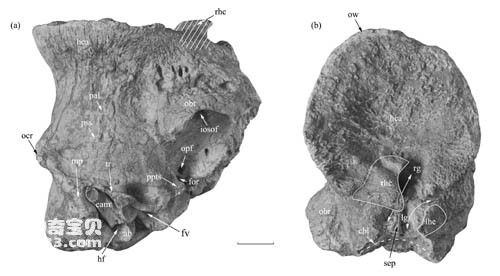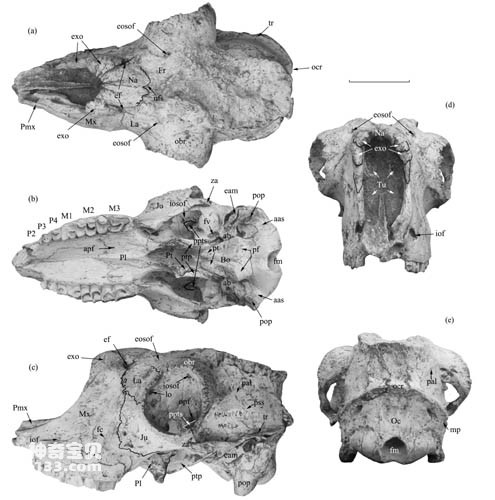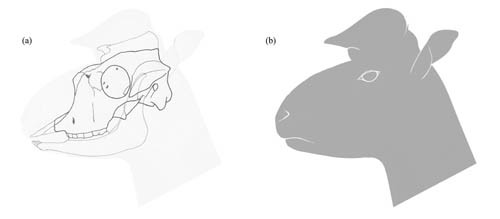Tsaidamotherium is a medium-sized bovine animal of the order Muskoxen, which lived in the early late Miocene. The shape of the Qaidam beast's horn is very special and complex, and can be called a "horn organ": there is a large disc-shaped bone structure on the parietal bone, called the posterior horn disk; the true center of the horn is degenerated and is located on the horn disk. Anteriorly, above the orbit, and the corners of both sides are asymmetrical. This nearly "one-horned" horn center shape is unique among all bovine species. The earliest Qaidam beast fossil was found in the Qaidam Basin in Qinghai, China. The material is scarce, and no such fossil has been found since Bulin first reported it in 1935. The discovery of the Qaidam beast in the Linxia Basin is the second discovery of this type of bovid after more than 70 years.

Figure 1 Tsaidamotherium brevirostrum, holotype specimen
The new species of T. brevirostrum in the Linxia Basin is roughly the same age as the genus type species, but the true horn center of the new species is more degenerate, and the frontal sinus is reduced and located in the horn organ. Below, represents a more specialized type. The discovery of the new species also adds to the facial features of Qaidamus, including extremely retracted and thickened nasal bones, growths on the lateral edges of the nostrils, short and high maxillary bones, etc. These facial features are also specialized and rare.

Figure 2 Tsaidamotherium brevirostrum, female skull
The shape of the posterior part of the horns of Qaidamus is similar to the osteophytes at the base of the horns of living musk oxen. Therefore, the shape of the horn sheaths may also be similar to the base of the horn sheaths of musk oxen, with a rounded bulge instead of the common upright horn sheaths. Although there is a slight twist between the horn disk and the longitudinal axis of the skull, both the horn disk itself and the skull are symmetrical structures. The face of Qaidam beast was very short, and its nostrils were narrow and high, indicating that it may be similar to the living saiga antelope and takin, with an enlarged nasal cavity to adapt to the relatively cold climate environment. The Qaidamotherium fossil origin in the Linxia Basin is located on the southwest edge of the basin, and its environmental characteristics may be slightly different from those in the center of the basin. Although the fossil materials of Qaidamotherium are very rare, its distribution range is wide, and it may be distributed in the narrow mountain forest zone on the northern edge of the Qinghai-Tibet Plateau.

Figure 3 Composite view (a) and head restoration view (b) of the skull and mandible line of Qaidam beast
animal tags: Tsaidamotherium
We created this article in conjunction with AI technology, then made sure it was fact-checked and edited by a Animals Top editor.